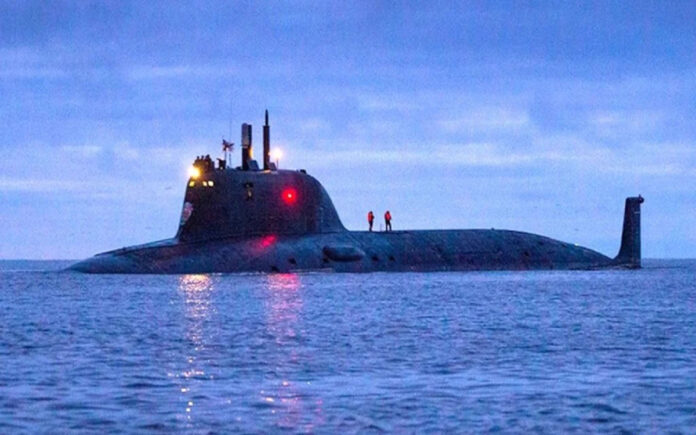New Delhi: India is poised to bolster its naval defense with the imminent commissioning of its third nuclear-powered ballistic missile submarine (SSBN) within the next six months. This strategic enhancement follows the formal induction of the second SSBN, INS Arighaat, into the Strategic Forces Command at Visakhapatnam on Thursday.
The third SSBN, set to be commissioned as INS Aridhaman early next year, surpasses its predecessors, INS Arihant and INS Arighaat, in size and missile capacity. This new vessel will carry a greater number of long-range nuclear-tipped missiles, further reinforcing India’s sea-based nuclear deterrent.
INS Arighaat, now equipped to deploy K-4 missiles with a range exceeding 3,000 km, contrasts with INS Arihant, which carries K-15 missiles with a range of 750 km. This enhanced capability is crucial for maintaining a robust strategic deterrent amid ongoing military tensions with China. SSBNs, designed for prolonged submersion, offer a secure and stealthy platform for second-strike capabilities, effectively deterring potential first strikes.
The commissioning ceremony for INS Arighaat, which features a 6,000-tonne displacement and four missile silos, was attended by Defence Minister Rajnath Singh, Chief of Defence Staff General Anil Chauhan, Navy Chief Admiral Dinesh Tripathi, and DRDO Chief Samir Kamat.
“INS Arighaat will further strengthen India’s nuclear triad, enhance nuclear deterrence, help in establishing strategic balance and peace in the region, and play a decisive role in the country’s security,” Singh stated.
He also highlighted the significance of former Prime Minister Vajpayee’s “political will” in advancing India’s nuclear capabilities through the 1998 Pokhran-II tests, emphasizing the need for rapid development in defense amidst today’s geopolitical challenges. “It is essential for us to develop rapidly in every field, including defence, especially in today’s geopolitical scenario,” he said.
Also Read | Eastern Germany’s Elections May Shift European Balance Toward Moscow
INS Arighaat incorporates advanced indigenous technologies, making it “much more capable” than INS Arihant, which became operational in 2018. “The two together will enhance India’s capability to deter potential adversaries and safeguard its national interests,” an official remarked.
The forthcoming INS Aridhaman and a fourth SSBN under construction will further enhance India’s naval strength, with their larger size allowing for the deployment of more K-4 missiles.
Also Read | Russia Withdraws Troops from Burkina Faso to Bolster Efforts in Ukraine
The four submarines, part of the classified Advanced Technology Vessel (ATV) project initiated in the 1990s at a cost exceeding Rs 90,000 crore, are smaller compared to SSBNs from major powers like the US, China, and Russia. China operates six Jin-class SSBNs with 10,000-km range JL-3 missiles and six nuclear-powered attack submarines (SSNs), while the US maintains 14 Ohio-class SSBNs and 53 SSNs.
India is also planning the development of 13,500-tonne SSBNs equipped with more powerful 190 MW reactors. Additionally, a Rs 40,000 crore project to construct two 6,000-tonne ‘hunter-killer’ SSNs armed with torpedoes, anti-ship, and land-attack missiles is awaiting final approval from the Prime Minister-led Cabinet Committee on Security. This project is expected to span at least a decade.



